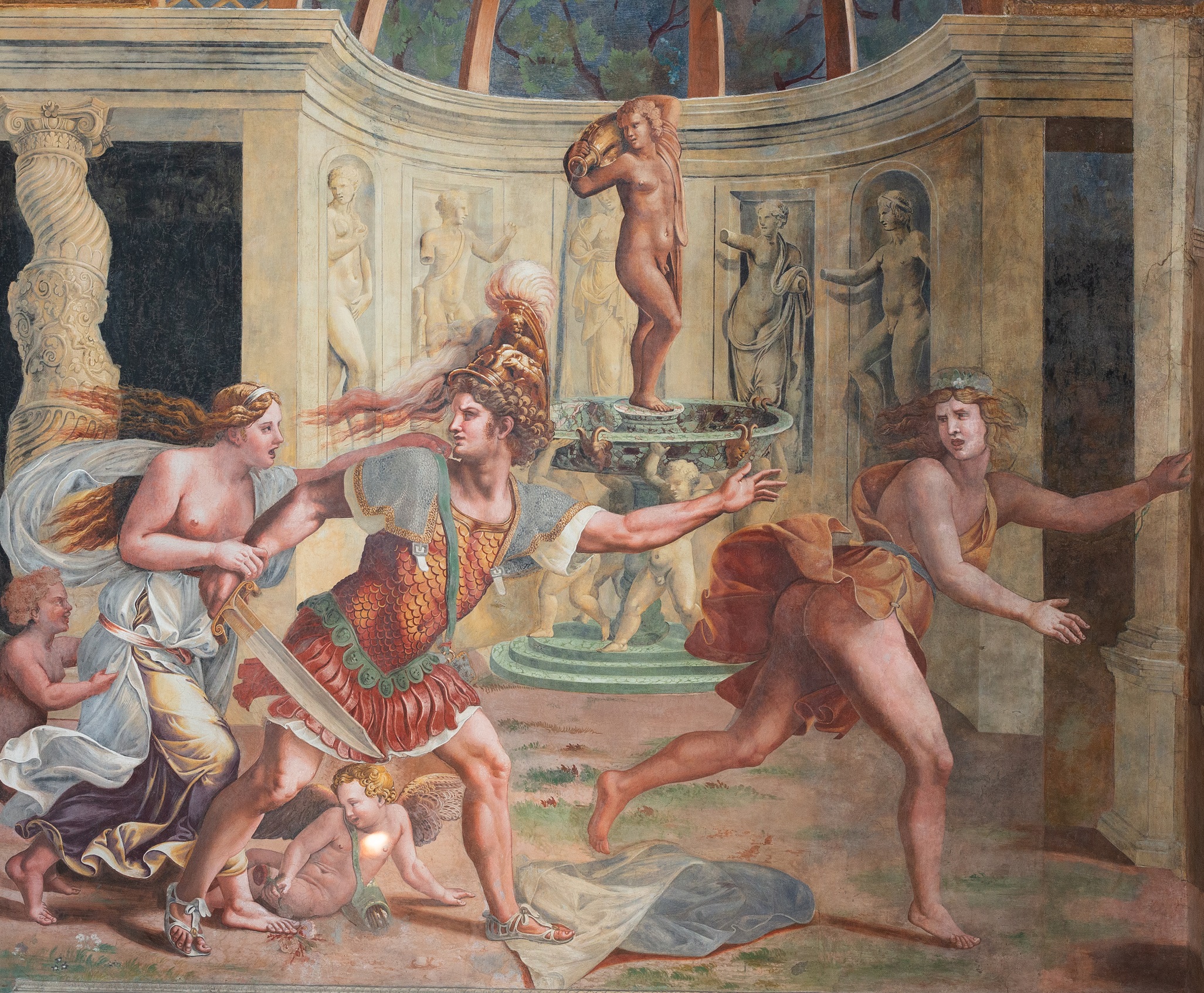
Fondazione Palazzo Te proposes for the 2024 exhibition season a broad and articulated journey around the theme of metamorphosis, celebrating one of the most recurring and enigmatic topoi present within the palace created by Giulio Romano. This approach follows the tradition started in 2019 that investigates an annual theme to offer visitors a deep and prismatic experience of Palazzo Te, a way to enhance the inherent value of Palazzo Te itself, from this year granted by the Municipality of Mantua to the Fondazione.
Palazzo Te. The labyrinth of metamorphosis collects a rich program of events and exhibitions dedicated to this theme that has crossed the ages without ever losing its intensity, activating ideas and new ways to discover an unparalleled iconographic and architectural repertoire. Metamorphosis, understood as a fundamental interrogation on the essence of nature and the meaning of humanity, is in fact presented as a narrative line that is both deep and playful, ironic and dizzying, always central, of the artistic project of Giulio Romano at Palazzo Te.
The palace is steeped in references to Ovid and Apuleius, modern reinterpretations and contemporary visions, it manifests itself as a wunderkammer, a sample of forms inspired by poetry and ancient mythology, travels and discoveries of the time: decorations, coramis, objects and animals are constantly transforming, generating an atmosphere of wonder at the base of the charm that has been exercised on anyone who has crossed its threshold from the sixteenth century to today.
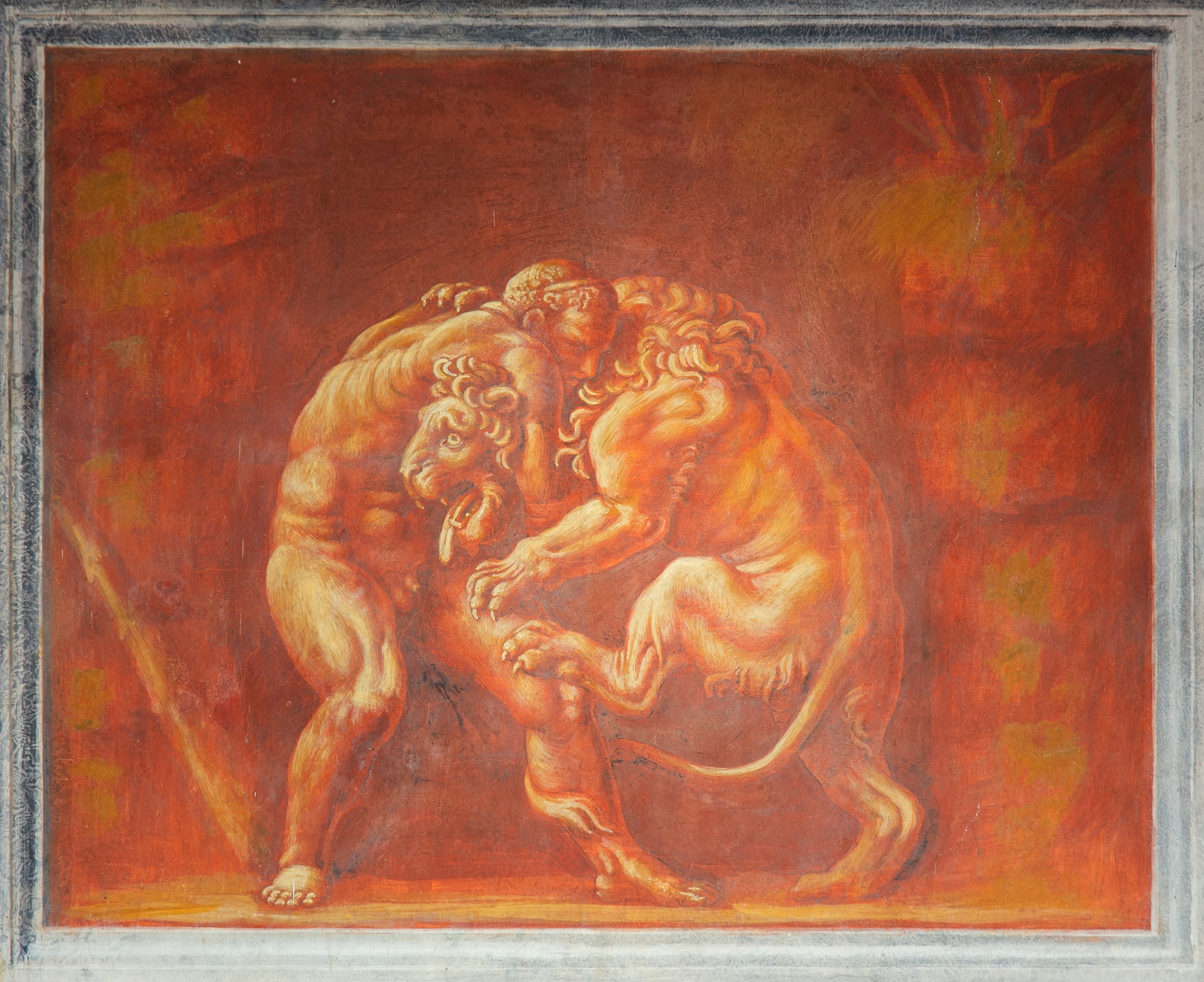
“Metamorphosis, understood as a fundamental interrogation on the essence of nature and the meaning of humanity, is in fact presented as a narrative line that is both deep and playful, ironic and dizzying, always central, of the artistic project of Giulio Romano at Palazzo Te.”.
STEFANO BAIA CURIONI
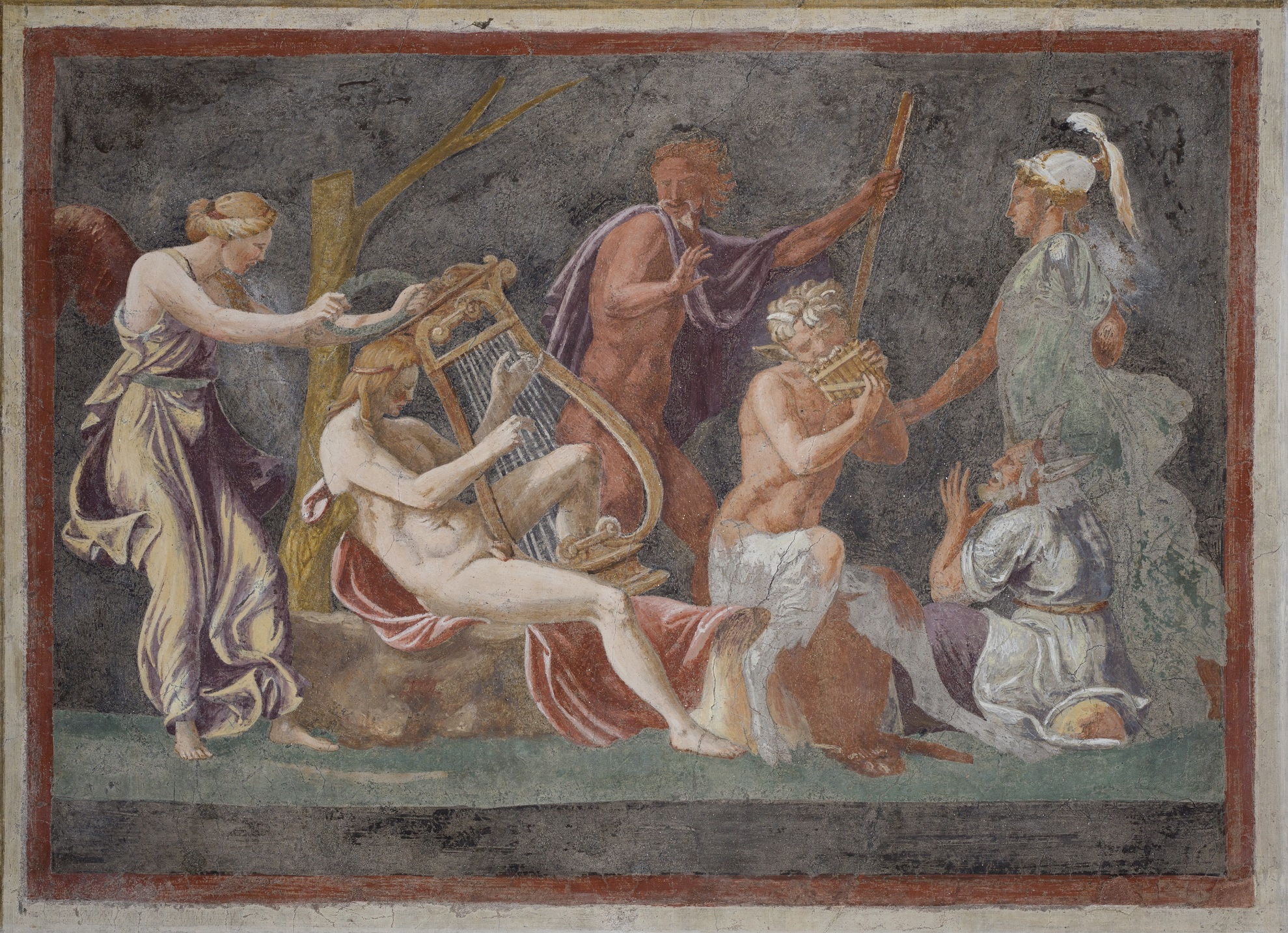
The program kicks off on March 27, 2024 with an enhancement of the visit path of the rooms of Palazzo Te through informative supports and a renewed lighting system that will highlight the references to metamorphosis present in the decorative cycle of the Palace.
The Metamorphoses of Ovid, in fact, burst into the architecture of Palazzo Te from the first room of the “private” apartment, called precisely Ovid’s Room. This environment, whose decoration intertwines stories of challenge and love between humans and gods, introduces the idea that the palace unfolds like a labyrinth of ancient myths and tales, images of heroes and loves, in a crescendo where wonder, harmony, poetry and magic overlap.
The ancient pedestrian entrance of the Loggia delle Muse, decorated in fresco and stucco with the seven female divinities daughters of Mnemosine, was thought of as an emblem and declaration of intent, presenting Palazzo Te as a place where art dominates uncontested: here it will be possible to reread the Ovidian story of Orpheus and Eurydice, while in the Sala dei Cavalli one will dwell on the Labors of Hercules.
In the Room of Love and Psyche, the most richly decorated, the entire narrative articulation will be explained: from the story of the love between Psyche and Eros illustrated on the ceiling, taken from the Metamorphoses of Apuleius, to the stories of the loves of Polyphemus and Galatea, Venus and Adonis, Mars and Venus, Bacchus and Ariadne, Pasiphae and the bull, taken from the Metamorphoses of Ovid, and finally to the scene with Jupiter and Olympiade, inspired by the Life of Alexander by Plutarch.
The unveiling journey continues in the Room of the Eagles, originally intended to house the bed of Frederick II, where the rich stucco decorations, frescoes, Roman busts and storied marbles, meet the myth of the Fall of Phaeton from Ovid’s Metamorphoses. Naturally, the reading of the Room of the Giants, the dizzying epicenter of the palace where the battle between Jupiter and the Giants captivates the gaze in a whirlwind of aesthetic stimuli, could not be missing.
The evolution of the concept of metamorphosis will be thoroughly investigated in the international study conference to be held on June 21 and 22 with interventions, among others, by Christian Greco, Marialuisa Catoni, Stéphane Verger, Annie Cohen-Solal, Raffaella Morselli, Francesca Cappelletti and Lorenzo Giusti.
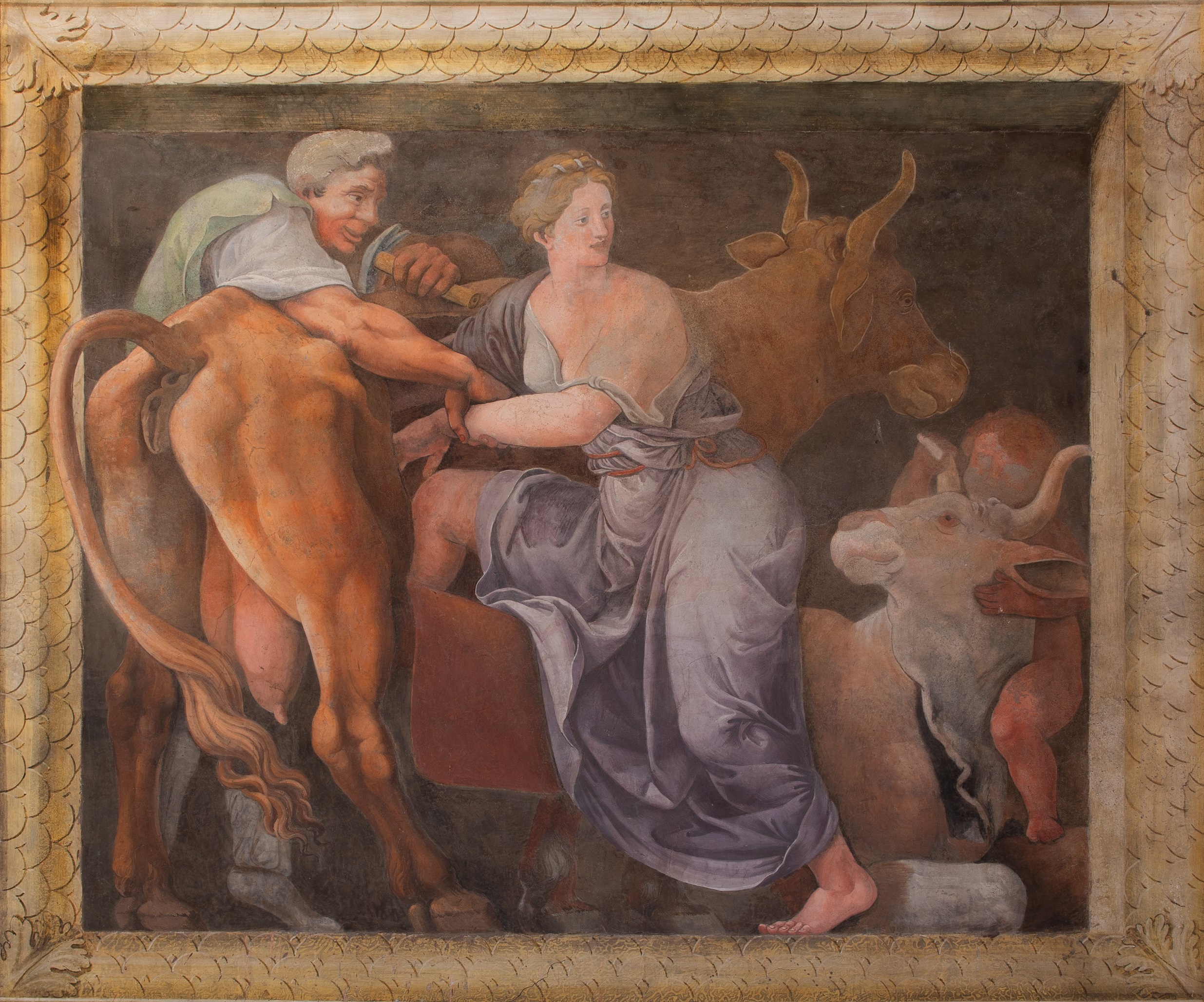
The program continues in the fall of 2024 with the exhibition The Labyrinth of Picasso. Poetry, salvation and metamorphosis, curated by Annie Cohen-Solal and co-organized by the Foundation with the Musée National Picasso in Paris, which adds, updating it, a further level of reading and dialogue with the myth. Reconstructing the inspirations that the Spanish Master finds by immersing himself in poetry, from Ovid to Apollinaire, the exhibition focuses, between irony and anguish, on the power of transformation, the mortality of desire and the possibility of its rebalancing in the lyrical experience, and suggests new readings also of the surrounding space.
The exhibition path, set up in the Napoleonic rooms from September 5, 2024 to January 6, 2025, retraces the extraordinary adventure of an artist who emigrated to France in 1900 and stigmatized by the police and the Academy of Fine Arts as a foreigner, anarchist and avant-garde artist until 1944. Welcomed by a small and generous group of then marginal poets, Picasso finds in poetry the strength that allows him to overcome the many difficulties related to his status and to articulate an aesthetic paradigm strongly favorable to change and metamorphosis.
Fondazione Palazzo Te, Civic Museums with the Municipality of Mantua and Palazzo Reale with the Municipality of Milan have entered into a cultural collaboration agreement to promote the two exhibitions dedicated to Pablo Picasso. In Milan, Picasso the Stranger is scheduled, Royal Palace, September 20, 2024 – February 2, 2025, co-produced with Marsilio Arte. The two exhibitions, curated by Annie Cohen-Solal with Marsilio Arte catalog, are born from the collaboration with the National Picasso Museum in Paris. A still unknown Picasso emerges, in particular resonance with our contemporary: the poet and the stranger. With the entrance ticket of the first exhibition, visitors will be able to access the other with the reduced.
The program will find its conclusive moment in the spring of 2025 with the exhibition Metamorphosis at Palazzo Te curated by Claudia Cieri Via, which through a series of international loans will trigger new dialogues between the palace, Giulio Romano and other masters who drew inspiration from the timeless stories of the myth.
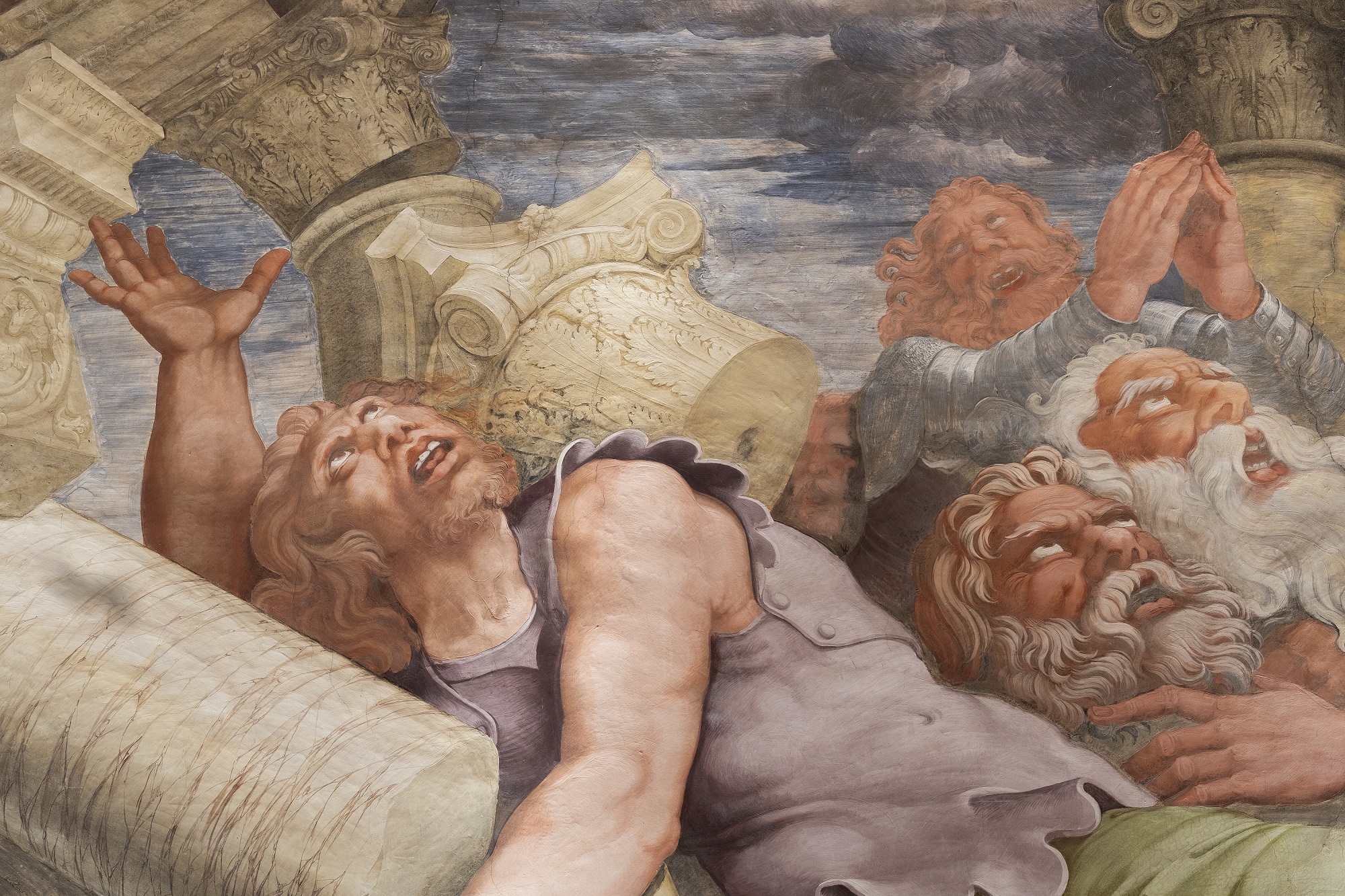
The organization of themes on an annual basis also encourages collaboration between the cultural institutions of the territory and its artists for the realization of multidisciplinary programs that intend to appeal to as wide and diversified a public as possible, declined in proposals ranging from exhibitions to concerts, from conferences to workshops.
In this perspective, the Fondazione Palazzo Te proposes the Mutaforma installation by Dario Moretti, artist and director of the Teatro all’Improvviso, and a rich schedule of musical and performative appointments, including Metamorphosen by Strauss with the Mantova Chamber Orchestra, Metamorfosi notturne by Ligeti, Six Methamorphosis after Ovid by Britten, Music for eighteen musicians by Reich with MantovaMusica.
The program also includes the now stable appointment with the Scuola di Palazzo Te which, after Il Mestiere dell’arte curated by Clarice Pecori Giraldi, proposes Studiare Arte Patrimonio, analisi e storia curated by Stefania Gerevini; and various residential workshops of contemporary dance and photography open to young artists and students.
The exhibition season Palazzo Te. The labyrinth of metamorphosis is promoted by the Municipality of Mantua, produced and organized by Palazzo Te, with the contribution of the Fondazione Banca Agricola Mantovana, in synergy with Mantova città d’Arte e di Cultura.

